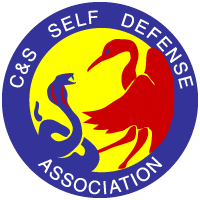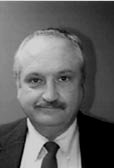Think about this famous quote:
"Everything should be made as simple as possible but not more so."
— Albert Einstein
There are many times when it is useful in our Art to be able to guide a
group through a change process using facilitation techniques. Facilitation
is not teaching, which is usually a one-way dialog between an instructor
and his/her own students. What is facilitation? Facilitation comes from
the verb "to make easier". That is, a facilitator helps a group work as a
constructive or cohesive unit; someone who helps them achieve their
objectives. I recently attended a class on how to facilitate. It was both
enjoyable as well as informative. I am happy to share some of what I
learned in the class with you.
What kind of groups exist in the average karate school that could benefit
from facilitation? I can think of several: advanced students, students
interested in setting up a self-defense program, black belts. Utilizing
the human resources within your program as well as across C&S requires
that we are able to tap into the creative potential of people working
together toward a common goal. Groups provide expertise, viewpoints, and
perspective that an individual usually does not possess. That is, members
of a group that work well together create an almost magical effect called
synergy (where the output of the group is greater than just the sum of its
parts).
What are some of the challenges facing a group? Well there can be
personality conflicts, hidden agendas, problems with the facilitator, and
even whether a particular group of people are in fact the right ones to be
making the decisions. If such things are going on, the facilitator must
invite participants to step up to a higher playing field and use their
expertise to help achieve the goals defined by the group. Speaking of
goals, successful facilitation can be divided into four major areas called
GRPI: Goals, Roles, Process, and Interpersonal Agreements. Let's take each
of these facets of facilitation in turn.
If you have been around me for very long you have probably learned that I
place a very high value in defining goals for just about anything you do
(well maybe not everything). Goals clarify; they provide important
boundaries; they define the purpose of what you are trying to accomplish.
Purpose and goals should be empowering and something that all members of
the group agree to and support. It is disastrous when these high level
aspects of a project or discussion have not been well defined. Without
goals, members of the group begin to ask questions such as "Is this the
right direction to go in?". The second area of facilitation has to do with
Roles. Every member of the group should have a well defined role. This
answers questions such as "Why am I here?" or "What am I doing?". The
third area, Process, includes all the "how-to's" such as defining how the
group will accomplish its task; how it will achieve its purpose. The key
part of Process is the agenda. Every group meeting should have an agenda
that specifies what will be covered (consistent with the goals and purpose
of the meeting) as well as how much time is allocated to each area.
Lastly, Interpersonal Agreements set the ground rules for everyone in the
group. These include such things as expecting everyone to participate,
that the meeting (s) will begin and end on time, that there will be a
level playing field, that everyone can list at least one of their "pet
peeves."
So what does a facilitator actually do? A facilitator is someone who does
not actively participate in the group discussions but rather one who helps
guide the process to a successful conclusion. A good facilitator is a
leader (who helps to focus the discussion, stimulate ideas, and is the
guardian of the process), a referee (who helps to protect members, deal
with problems, and is the timekeeper), and most importantly neutral (who
is pragmatic, objective, and encourages feedback). I hope that this short
discussion of the art of facilitation has been useful. The best way to
learn about facilitation is to actually try it out for yourself. Let me
know what happens.


